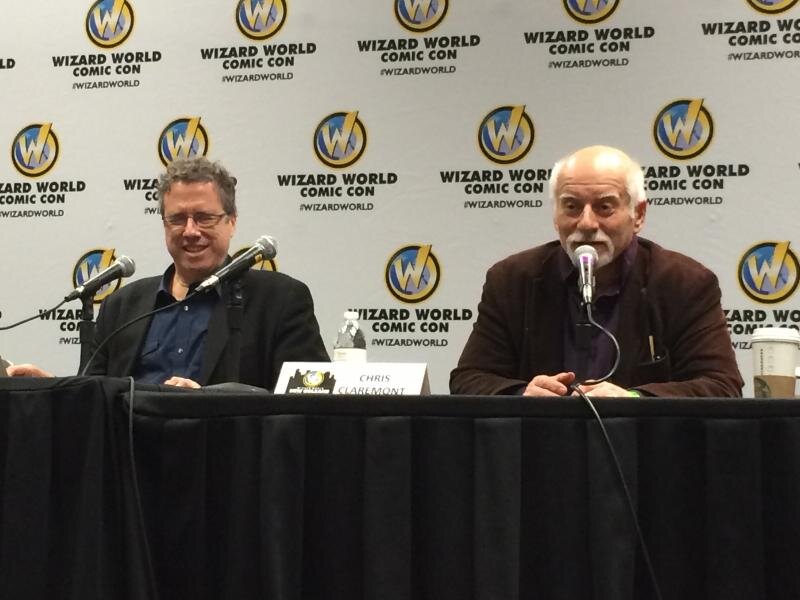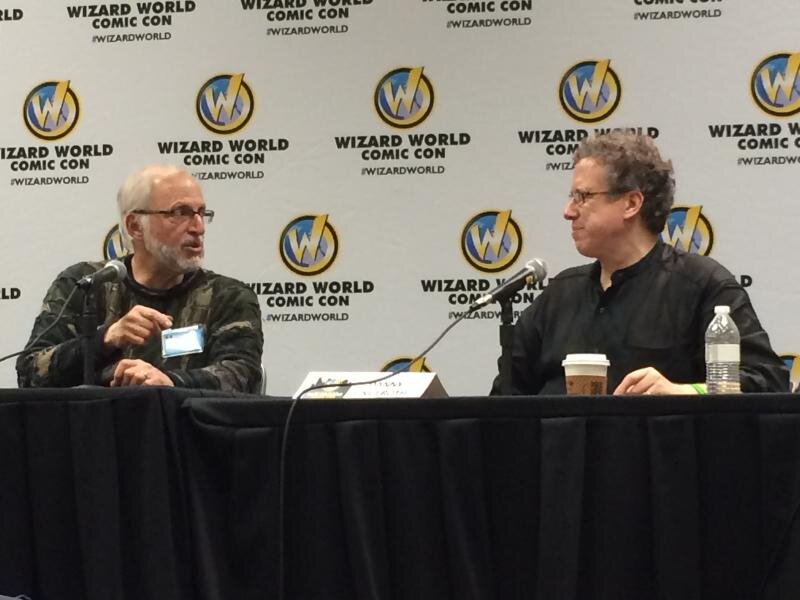Who's Who, and Other Tales from Comic Con

Cosplayers, divas, resentful writers and more Doctor Whos that you can shake a Tardis at attended last weekend's Comic Con.
What did we learn at the Wizard World Comic Con this weekend? Just how big Doctor Who is, for one thing. The presence of the most recent Doctor, Matt Smith, certainly helped to lure a legion of fans of all ages of British science fiction series to the Morial Convention Center, many dressed as one Doctor or another, the ones with good hair dressing like Smith. The Doctor Who fan panel Saturday was refreshing because it was truly nerdy as fans asked the panel about favorite companions and episodes (two teenaged girls in front of me squealed and hit each other when one panelist mentioned “The Girl in the Fireplace”), but the passion never seemed competitive.
It’s tempting to attribute the size of the crowds at the comic con to The Big Bang Theory and the Nerdist online empire, but the answer’s more likely simpler. Just as music fans in the early ’70s stopped feeling a need to give up rock ’n’ roll when they got jobs or got married, comic fans didn’t abandon their collections to the neglectful whims of their moms while off at college. Videotapes, DVDs, Netflix and torrents mean that it’s the rare film that actually becomes rare today, and the movies, television shows and games that escorted us through the teenage tough times can still be accessed without significant shame or effort. Now the audience that once loved zombie movies gets a zombie television show that has matured as the audience has. Sheldon Cooper doesn’t hurt, but he wasn’t necessary for pop culture to occupy the place it does in our culture today.
One of the few qualms I had on the weekend though, was that the pop artifacts we like may be mistaken for good art. They’re not necessarily bad, but even the Doctor Who panelists acknowledged that for decades, viewers had look charitably at the attempted visual effects (they also suggested that Matt Smith coming at a time when the technical end was improving helped account for the growth of the show’s popularity during his run). But cardboard Daleks are of a piece with some Stan Lee’s dialogue in Marvel Comics, which seemed to anticipate ADD by burying the reader in adjective-rich text that reminded them what happened a panel ago. Those elements and countless others give the artifacts personality that we can bond to, which isn't the same thing as being great.
Other thoughts from the weekend:
- It’s no surprise that New Orleans turned out in force for the cosplay component. Besides the army of Doctor Whos, I was glad to see an Inspector Gadget, Castle and Beckett, two stone funereal angels, Team Rocket, a surprising number of Ashs, and a Hellboy (who naturally attended Hellboy creator Mike Mignola’s panel). The Halloween trend of sexy nurses, sexy pirates and the like extended to cosplay, and there were a number of S.H.I.E.L.D. agents in tight black, store-bought jumpsuits. Personally, I preferred the Thor bunny that looked less pre-fab.
In the cosplay panel, one panelist recommended that guys invest in an undergarment known as a dance belt because Spandex is unforgiving, particularly in the crotch. Every guy dressed as Deadpool over the weekend proved the wisdom of his suggestion.
There were a few semi-pro cosplayers who had their own booths, but their purpose wasn’t clear. To show that you too could be a cosplay star? That there’s a future in your cosplay? One seemed like an ironic warning for those drawing superheroes on artists’ row as she had made her body into the figure that female superheroes too often have with comically oversized breasts, wasp waists, and an inconvenient rib or two removed for added svelteness. The effect was freakish more than attractive and powerful.
- Nobody seemed more amused by writer Chris Claremont than Claremont during his panel on his career writing The Uncanny X-Men. His self-referential wryness was a private pleasure, but he did provide some interesting insights into the comic book, which he and Dave Cockrum created in 1975 when they introduced a host of new mutants that were not a part of the team when the comic folded in 1969. “The advantage I had with Uncanny was that it was new,” Claremont said, so he didn’t have any continuity to deal with. “The only good villains I inherited were The Sentinels.” He was a little dismissive of subsequent writers who have resurrected characters he killed since it mutes the drama—“It's like, ‘Who cares?’ Nobody's going to die forever.” Of course, he is the writer who created much of the complicated canon for the book, including the flash forward into the future for the “Days of Future Past” storyline that inspired the upcoming X-Men movie—a future that writers will have to get to somehow, some day.
To his credit, Claremont didn’t strain himself to be more than casually politic. He said he felt like there was no place for him at Marvel when he left in 2010, though he did so in a way that made it clear how he felt about the current regime, and he sweet talked his feelings about Jim Lee’s costume decisions for Gambit and Jean Grey even less. He did, however, credit Cockrum with a crucial invention for Wolverine. Claremont understood the character's mutant power to be super healing - nothing terribly sexy - and thought of the claws as part of the costume. When Cockrum drew the claws coming out of the back of Wolverine's hands, the ick factor that generated for all who saw it "made the character sing," Claremont said.
- “I wanted to kill a pope.” - artist Humberto Ramos on his inspiration for Revelations, where he killed a cardinal instead.
- When asked if one day Wrestlemania will be headlined by a Divas match, WWE Diva champion A.J. Lee said, “Realistically, no.”
- I quit the Spiderwoman book when I realized I didn’t have any ideas for it.” - writer Marv Wolfman. During his panel, Wolfman said that he has long been advocating for digital comics, and considers digital comics as they’re currently sold on Comixology.com to be the infancy of digital comics. As in almost every other entertainment platform, the Internet is an inevitable part of comics future, though editor Danny Fingeroth said that they are the only one where online sales lead to physical sales, possibly because of comics’ status as collectables. Wolfman said the current digital presentations allowed writers to continue the practice of putting surprises on odd-numbered pages because they couldn’t be seen out of sequence, as they might be if on even-numbered pages. Mike Mignola said he had no concerns about a digital future as long as there would be physical collections and it could accommodate two-page layouts since he designed his two-page spreads to work together.
- When Cassandra Peterson explained the development of Elvira as a character, she mentioned that the friend who helped her with the gown and wig died of AIDS, and the next three hairdressers that worked on her wig died of AIDS as well. In total, she recounted the passing of five friends to AIDS, bringing a little gravity to a weekend largely spent escaping it.
- “It’s not fake. He’s the best spokesman comics ever had.” - Marv Wolfman on Stan Lee’s legendary effusiveness in person and in comics.
For more photos from the Wizard World Comic Con in New Orleans, visit our Flickr page.











